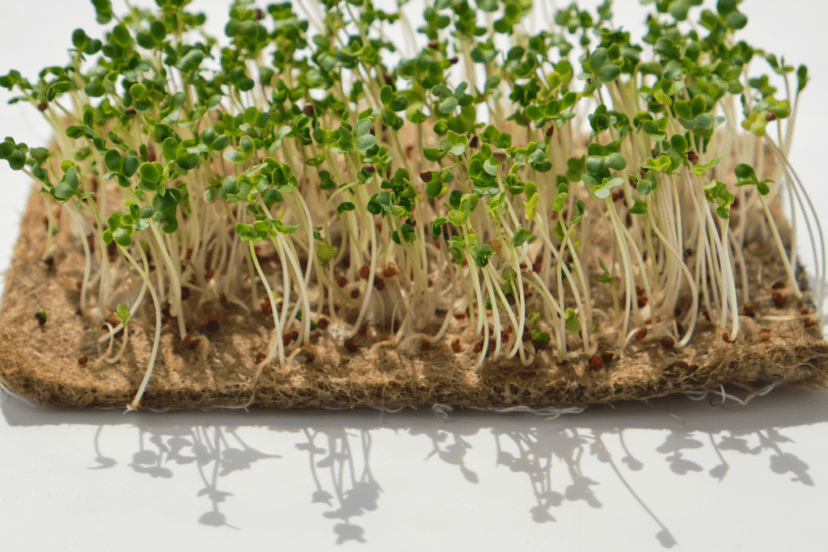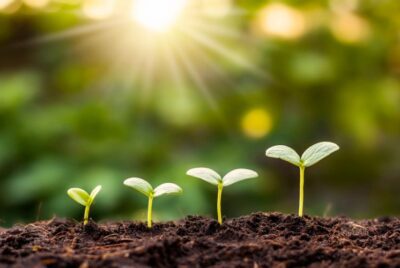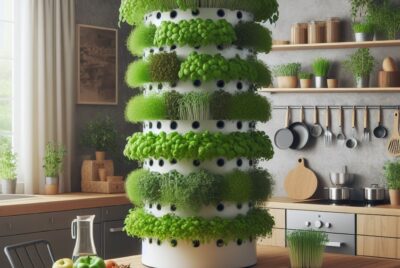Grow Mats for Microgreens: Cultivating Nutrient-Dense Greens Made Easy
I’m thrilled to delve into the captivating world of these tiny, nutrient-packed wonders. Microgreens have taken the culinary and health communities by storm, offering a burst of flavor and nutritional benefits in every bite. To unlock their full potential, one essential tool comes to the forefront: grow mats for microgreens. These specialized mats provide a nurturing environment that empowers microgreens to flourish from seed to harvest. Join me as we embark on a journey of discovering the immense possibilities of cultivating vibrant microgreens with the assistance of purpose-designed grow mats.
The Importance of Grow Mats for Microgreens
When it comes to cultivating microgreens, choosing the right growing medium is crucial for their success. One popular and highly effective option is using grow mats. Grow mats are specially designed mats made from biodegradable materials that provide an ideal environment for microgreens to grow.
Choosing the Right Grow Mat
When selecting a grow mat for your microgreens, there are a few factors to consider. Look for mats made from organic and sustainable materials such as coconut coir, hemp, or jute. These materials are not only environmentally friendly but also provide excellent moisture retention and aeration for the roots of the microgreens.
Advantages of Using Grow Mats
Using grow mats for microgreens offers several advantages. Firstly, they provide a consistent and sterile growing surface, minimizing the risk of soil-borne diseases and pests. Secondly, grow mats are easy to handle and manage, allowing for clean and hassle-free cultivation. Additionally, these mats are reusable, making them a cost-effective choice in the long run.
Step-by-Step Guide to Using Grow Mats for Microgreens
- Select a shallow tray or container with drainage holes.
- Place the grow mat in the tray, ensuring it covers the entire surface.
- Moisten the grow mat thoroughly with water.
- Sprinkle the microgreen seeds evenly across the mat.
- Gently press the seeds into the mat, ensuring good seed-to-mat contact.
- Mist the seeds with water to settle them in place.
- Cover the tray with a lid or plastic wrap to create a mini greenhouse effect.
- Place the tray in a well-lit area, away from direct sunlight.
- Water the microgreens regularly, keeping the grow mat moist but not waterlogged.
- After 7-14 days, depending on the variety, your microgreens will be ready to har
Common Mistakes to Avoid When Using Grow Mats
While using grow mats for microgreens is relatively straightforward, there are a few common mistakes to avoid:
- Overwatering: Excessive watering can lead to mold or root rot. Keep the grow mat moist, but not soggy.
- Insufficient lighting: Microgreens require adequate light to grow properly. Ensure they receive sufficient indirect sunlight or use artificial grow lights.
- Improper ventilation: Good air circulation is essential to prevent the buildup of moisture and avoid fungal issues. Provide proper ventilation in your growing area.
Tips for Successful Microgreen Cultivation with Grow Mats
To ensure successful microgreen cultivation with grow mats, consider the following tips:
- Seed Selection: Choose high-quality organic microgreen seeds from reputable suppliers to ensure better germination rates and flavorful harvests.
- Pre-Soaking Seeds: Some microgreen varieties benefit from pre-soaking their seeds for a few hours or overnight before sowing. This can promote faster and more uniform germination.
- Seed Density: Avoid overcrowding the seeds on the grow mat. Proper spacing allows each microgreen to receive adequate nutrients and grow to its full potential.
- Harvesting at the Right Time: Microgreens are best harvested when their first true leaves appear. This is usually around 7-14 days after germination, depending on the variety. Harvesting at the right time ensures optimal flavor and nutrient content.
- Rotation and Succession Planting: To maintain a continuous harvest, practice rotation and succession planting. This involves starting new batches of microgreens regularly, so you always have a fresh supply.
- Temperature and Humidity Control: Microgreens prefer slightly warm temperatures (around 65-75°F or 18-24°C) and moderate humidity levels. Ensure your growing environment meets these conditions for optimal growth.
- Pest Management: While grow mats help reduce the risk of pests, it’s essential to monitor your microgreens regularly for any signs of infestations. Implement natural pest control methods when necessary, such as introducing beneficial insects.
- Compost and Recycle: Being eco-friendly is essential for sustainable microgreen cultivation. Compost leftover grow mats and use recycled materials in your gardening practices whenever possible.
Comparison of Different Types of Grow Mats
Various types of grow mats are available on the market, each with its unique features and benefits. Here’s a comparison of some popular options:
- Coconut Coir Mats: Made from coconut fiber, these mats are excellent at retaining moisture and providing a stable environment for microgreens. They are biodegradable and renewable, making them an eco-friendly choice.
- Hemp Mats: Hemp mats are durable and have good moisture retention properties. They are also biodegradable, making them an environmentally conscious option.
- Jute Mats: Jute is another natural fiber that works well as a grow mat. It provides good aeration for the roots of microgreens and is a sustainable choice.
- Biodegradable Felt Mats: Some mats are made from biodegradable felt materials, providing a soft and cushioned surface for delicate microgreens.
- Plastic-Free Mats: Look for mats that are free from plastic or synthetic materials to minimize your environmental impact.
Sustainable and Eco-Friendly Options
As a responsible microgreen grower, consider adopting sustainable practices:
- Water Conservation: Use a water-efficient irrigation system to minimize water wastage.
- Composting: Compost organic waste from your microgreens to enrich the soil naturally.
- Reuse and Repurpose: Find creative ways to reuse and repurpose materials, such as using old containers as planters.
- Support Local: Purchase seeds and materials from local suppliers to reduce your carbon footprint.
Conclusion
Growing microgreens using grow mats is a rewarding and environmentally friendly way to enjoy nutrient-dense greens at home. By selecting the right grow mat, following best practices, and embracing sustainability, you can cultivate thriving microgreens with ease. Remember, this journey offers not only delicious and healthy harvests but also a deeper connection to nature and sustainable living.
FAQs about Grow Mats for Microgreens
1. Can I reuse grow mats for multiple harvests?
Yes, most grow mats can be reused for multiple harvests, depending on their condition. Make sure to clean and sanitize the mats between uses to avoid any potential contamination or pest issues.
2. How often should I water microgreens on grow mats?
Water your microgreens regularly to keep the grow mats moist. It’s best to mist them lightly once or twice a day, depending on the humidity levels in your growing environment. Avoid overwatering, as it can lead to mold or root rot.
3. Can I use grow mats for other types of plants?
While grow mats are primarily designed for microgreens, you can experiment with using them for other small plants or herbs. However, keep in mind that different plants have varying moisture and nutrient requirements, so adjust your watering and care accordingly.
4. Do I need to provide additional fertilization when using grow mats?
Grow mats often have some natural nutrients that can support the initial growth of microgreens. However, as the plants mature, they may benefit from additional fertilization. Consider using organic liquid fertilizers or compost tea diluted according to the manufacturer’s instructions.
5. Are there any alternatives to using grow mats for microgreens?
Yes, if you prefer an alternative to grow mats, you can explore other growing mediums such as soil, coco coir, or hydroponic systems. Each method has its pros and cons, so choose the one that aligns with your preferences and available resources.
Remember, cultivating microgreens with grow mats is an enjoyable and rewarding experience. With a little care and attention, you’ll be able to harvest vibrant and nutritious greens right from your own home. Happy growing!




